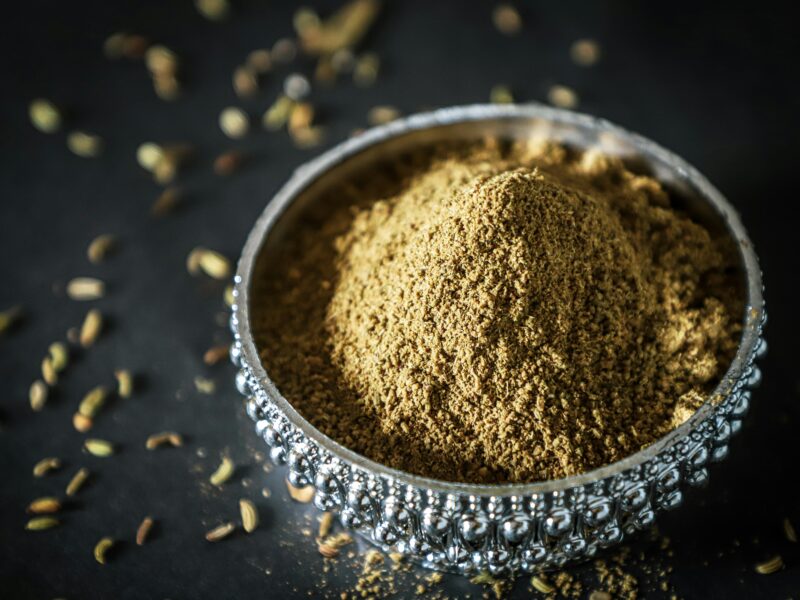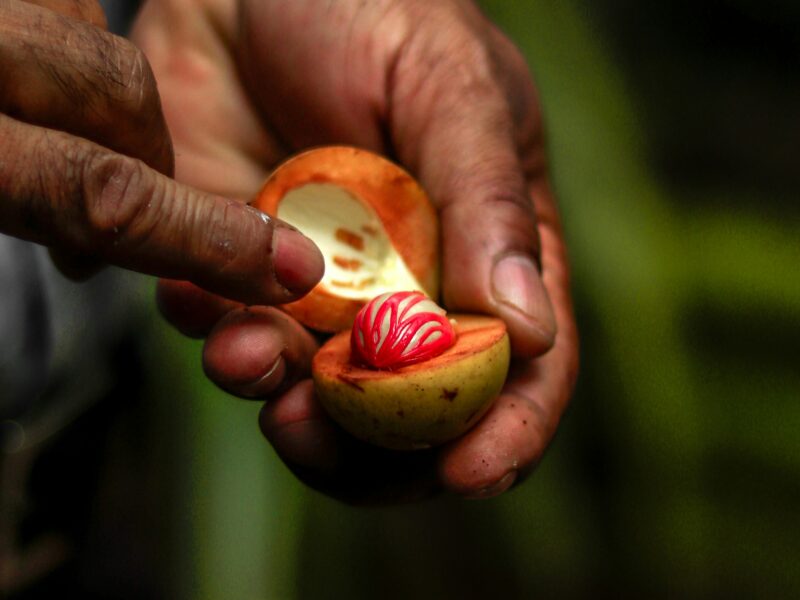Turmeric is a vibrant golden spice known for its warm, earthy flavor and wide range of culinary uses. A staple in Indian, Southeast Asian, and Middle Eastern cuisine, turmeric adds depth to curries, soups, and rice dishes. Beyond its culinary appeal, this spice has been valued for centuries due to its deep color and distinct aroma. But what makes turmeric such an essential ingredient, and how can you incorporate it into your cooking?
Origin and cultivation of turmeric
Turmeric comes from the Curcuma longa plant, a member of the ginger family. Native to India and Southeast Asia, it thrives in warm, humid climates with rich, well-drained soil. The spice is harvested from the underground rhizomes, which are boiled, dried, and ground into a fine, golden-yellow powder. India remains the largest producer and exporter of turmeric, but it is also cultivated in China, Thailand, and Indonesia.
What does turmeric taste like?
Turmeric has a warm, slightly bitter, and earthy flavor with subtle hints of pepper and mustard. While its taste is not overpowering, it adds a deep, aromatic complexity to dishes.
Flavor nuances:
- Warm and earthy
- Slightly bitter with a peppery undertone
- Mildly musky with hints of ginger
- Adds depth without overpowering other flavors
Turmeric substitutes – what can you use instead?
If you don’t have turmeric, consider these alternatives:
- Saffron: Provides a similar golden hue with a slightly floral taste.
- Curry powder: Often contains turmeric, along with other complementary spices.
- Mustard powder: Mimics the peppery bite of turmeric in some recipes.
- Ginger + paprika: Replicates the warmth and slight spiciness of turmeric.
Difference between fresh and dried turmeric
Turmeric is available in both fresh and dried forms, each offering different benefits. Fresh turmeric has a more pungent, zesty flavor, often used in juices, pastes, or grated into dishes. Dried turmeric, on the other hand, is milder and more concentrated, making it ideal for spice blends, seasoning, and cooking applications.
How to use turmeric in cooking
Turmeric enhances a variety of savory and sweet dishes, adding color and depth to many cuisines.
In savory dishes:
- Used in curries, stews, and soups for its signature golden hue and flavor.
- Stirred into rice dishes, pilafs, and lentils for added richness.
- Rubbed onto meats and seafood as part of spice blends or marinades.
- Added to vegetable dishes and stir-fries for an earthy depth.
In sweet foods and beverages:
- Blended into golden milk lattes for a soothing, spiced drink.
- Used in smoothies and juices for added warmth and color.
- Incorporated into baked goods like turmeric muffins and cakes.
- Infused into honey or syrups for a unique twist in desserts.
- Turmeric-Spiced Rice: A fragrant, golden-hued rice dish with rich flavors
- Spiced Lentil Soup: A hearty, spiced lentil soup with turmeric and coconut milk
- Turmeric Roasted Cauliflower: A flavorful side dish with a crispy, golden coating
Cooking tips:
- ✔ A little turmeric goes a long way—start with small amounts and adjust as needed.
- ✔ To enhance absorption, pair turmeric with black pepper and a fat source like coconut milk or oil.
- ✔ Store in an airtight container away from light and moisture to maintain freshness.
- ✔ Toast turmeric lightly before use to bring out its aroma and depth.
- ✔ Pairs well with cumin, coriander, garlic, and cinnamon in both sweet and savory dishes.
Where to buy turmeric
Turmeric is widely available in grocery stores, spice markets, and online retailers. When purchasing, look for high-quality, organic turmeric powder for the best flavor and potency. Fresh turmeric roots should be firm and brightly colored, free from wrinkles or mold.
Why turmeric deserves a place in your kitchen
Turmeric is an essential spice that adds warmth, depth, and vibrant color to countless dishes. Whether used in traditional curries, infused into drinks, or added to baked goods, its earthy complexity makes it a versatile addition to any spice rack.


